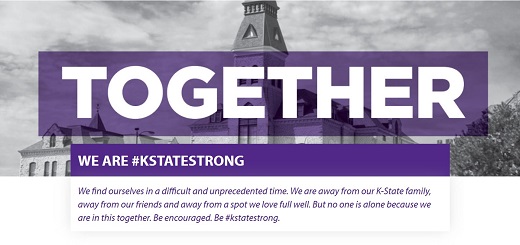04/29/20
K-State Current - April 29, 2020
K-State Current is a weekly news update for the Kansas Board of Regents to apprise the Regents on a few of the many successes and achievements made by K-State faculty, staff and students. 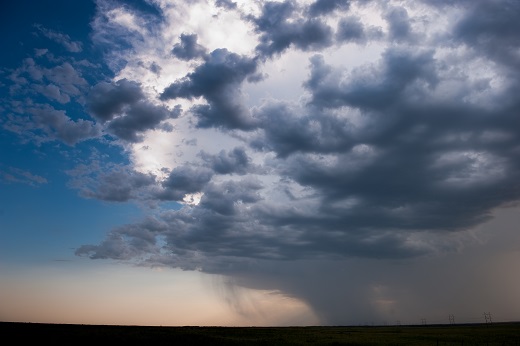
K-State News
Visit K-State’s “We Are #KStateStrong” site to view brief videos designed to keep the K-State family engaged, connected and inspired during these challenging times.
Jerry and Nancy Jaax to receive K-State Alumni Association’s Alumni Excellence Award
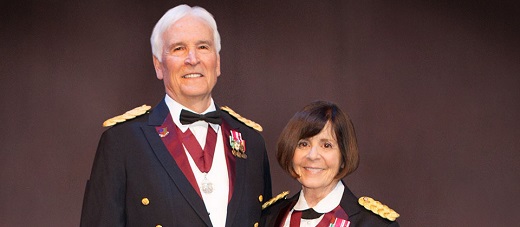 The K-State Alumni Association will honor Kansas State University alumni Dr. Jerry Jaax and Dr. Nancy Dunn Jaax as the 2020 recipients of the Alumni Excellence Award. They will receive the award at a banquet on Friday, Nov. 6, at the K-State Alumni Center.
The K-State Alumni Association will honor Kansas State University alumni Dr. Jerry Jaax and Dr. Nancy Dunn Jaax as the 2020 recipients of the Alumni Excellence Award. They will receive the award at a banquet on Friday, Nov. 6, at the K-State Alumni Center.
The Alumni Excellence Award is an annual award recognizing an alumna or alumnus of K-State whose career, service and achievements exemplify the spirit, values and excellence of the university.
"The Alumni Excellence Award exists to celebrate and showcase our K-State alumni for their contributions to society," said Amy Button Renz, president and CEO of the Alumni Association. "Jerry and Nancy have made the world a better and much safer place because of their research, training and teaching of others and hard work in critical moments. We are thrilled to honor them."
The Jaaxes have a long career in biosecurity, biosafety and high-hazard infectious disease research. As colonels in the U.S. Army Veterinary Corps, each was awarded the Legion of Merit, the Order of Military Medical Merit and numerous other recognitions, awards and commendations.
Jerry Jaax earned a bachelor's degree in veterinary medicine in 1970 and a Doctor of Veterinary Medicine in 1972. Nancy Jaax earned a bachelor's degree in veterinary medicine in 1971 and a Doctor of Veterinary Medicine in 1973.
The Jaaxes assisted the military team that led the response to the Ebola virus outbreak in Reston, Virginia, in 1989. Their experience in Reston provided a blueprint on how to keep American responders and workers safe during the Ebola outbreak in 2014. The Reston incident inspired the New York Times No. 1 bestseller The Hot Zone by Richard Preston and a 2019 National Geographic limited mini-series of the same name.
Jerry Jaax served as K-State's associate vice provost for research compliance and the university veterinarian. Nancy Jaax served as special projects officer in the Office of Sponsored Research Programs at K-State. Both were instrumental in winning the national competition for the National Bio and Agro-Defense Facility, commonly referred to as NBAF, and in the development of the Biosecurity Research Institute, or BRI, at Pat Roberts Hall. Both are College of Veterinary Medicine Alumni Fellows.
The Alumni Excellence Award is made possible by the generosity of the Curt and Sherry Frasier family of Beloit, Kansas. Both are 1973 graduates of K-State.
K-State begins offering COVID-19 testing for university students, employees
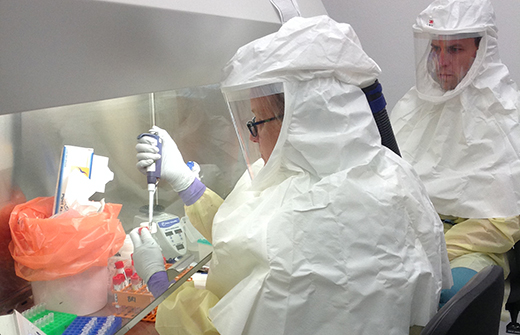 As the coronavirus pandemic continues, Kansas State University is helping combat the virus by developing important diagnostic tests and offering testing services for the university community.
As the coronavirus pandemic continues, Kansas State University is helping combat the virus by developing important diagnostic tests and offering testing services for the university community.
The university is now able to test K-State students, faculty and staff who need testing either because they are ill and have COVID-19 symptoms or because they have been exposed to someone with the virus. The Kansas Department of Health and Environment has asked K-State to ramp up human testing and researchers are increasing their testing capacity.
The testing is a partnership than involves more than 20 faculty and staff from the Kansas State Veterinary Diagnostic Laboratory, the Biosecurity Research Institute in Pat Roberts Hall, Lafene Health Center, the College of Veterinary Medicine and the Center of Excellence for Emerging and Zoonotic Animal Diseases. The collaborative team worked tirelessly through setbacks to make testing at K-State a possibility.
"This demonstrates how critical investments in research can serve the greater community — that's our land-grant mission," said Peter K. Dorhout, K-State vice president for research. "The team was able to mobilize and stand up a first-rate facility to ease pressures on the health care community and provide test analyses because they are part of the National Animal Health Laboratory Network that has trained and prepared to respond to animal and zoonotic disease outbreaks."
Students, faculty and staff can be tested at Lafene Health Center, and then testing samples are sent to the Kansas State Veterinary Diagnostic Laboratory, or KSVDL, for analysis. The laboratory has moved personnel, molecular equipment and computers into the Biosecurity Research Institute, or BRI, to conduct the analysis.
"Because of planning and preparation with the BRI over the last few years concerning foreign animal disease, as part of the National Animal Health Laboratory Network, KSVDL was able to respond quickly to the request to assist with human pandemic testing," said Jamie Henningson, KSVDL director.
For now, the testing is on a case-by-case basis and is only available for K-State students, faculty and staff. K-Staters should call their primary physician or Lafene Health Center at 785-532-6544 before they visit the health center. After a phone discussion, if testing is warranted, Lafene Health Center is able to see the patients.
The testing schedule is set up for 12 hours per day, which will allow the laboratory to perform about 270 tests each day. The university currently is not able to do wide-scale testing, called surveillance testing, but researchers are working through logistics to make the testing available to a wider community beyond K-State students, faculty and staff. The 270 tests per day is in addition to KSVDL’s maintenance of normal testing to support animal agriculture, companion animal testing, rabies diagnostics and zoos.
Having the testing capability at K-State is a step in the right direction, said Kyle Goerl, medical director for Lafene Health Center.
"Fortunately, with testing now being possible in town, the turnaround time is also much faster, which allows us to make more timely decisions for patient care," Goerl said. "Testing is important, but it is only one part of a comprehensive plan for any patient. Providers still need to consider the whole picture when making decisions about treatment for a patient."
The process of bringing testing to K-State involved many collaborators. Lafene Health Center, the Biosecurity Research Institute and the Kansas State Veterinary Diagnostic Laboratory reached out to other diagnostic laboratories to see how other people were handling the testing process.
The Biosecurity Research Institute, or BRI, lab is an advantage because it already has the high-security laboratories, equipment and expertise required for COVID-19 testing. The BRI is a biosafety level-3 facility that houses important multidisciplinary research programs on pathogens that affect animals, plants and insects as well as food safety and security. The BRI is one of the few labs of its kind in the nation.
The K-State collaborators worked to ensure regulation and adequate oversight for the COVID-19 testing. All laboratory staff have been trained on the new test and all laboratory space and procedures follow Clinical Laboratory Improvement Amendments, or CLIA, requirements. The KSVDL rabies laboratory is CLIA certified, which involves federal regulatory standards required for all labs performing human testing. Laboratory staff have completed HIPAA training, too.
KSVDL also has developed a faster COVID-19 modified CDC polymerase chain reaction, or PCR, test, which detects the presence of an antigen earlier to determine if a person has the virus. Researchers have submitted an Emergency Use Authorization for Food and Drug Administration approval. The approval makes diagnostic tools available during public health emergencies. If the laboratory receives FDA approval, it would allow the laboratory to ramp up testing even further.
"I am extremely proud of the work it took to bring this into reality," Goerl said. "We have amazing, caring people here at K-State and this would not be possible without them. There were multiple times we could have simply given up due to one problem or another, but despite all the setbacks, we found a way forward."
Important university research has been slowed, but not stopped, by COVID-19
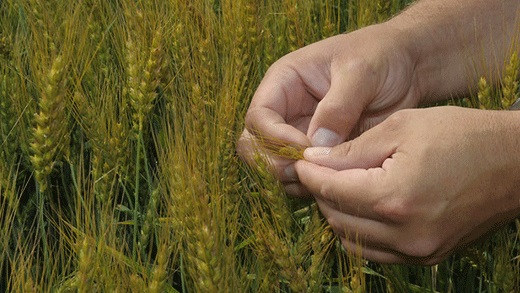 While much of the world has hit pause due to the global outbreak of the novel coronavirus, COVID-19, Kansas State University researchers are being tested to keep important agricultural studies moving forward.
While much of the world has hit pause due to the global outbreak of the novel coronavirus, COVID-19, Kansas State University researchers are being tested to keep important agricultural studies moving forward.
“Let’s just say that there have been challenges,” said Marty Draper, the associate dean for research in the College of Agriculture and associate director of K-State Research and Extension. “And every day as we recognize those challenges, we are trying to find new solutions and new work-arounds so that we can continue to do the things that we consider mission-critical.”
Listen to Marty Draper talk with Eric Atkinson about agricultural research on the radio program, Agriculture Today
Draper notes that “agriculture has the largest research footprint on campus,” which includes numerous studies on crops and livestock and such related fields as genetics and genetic improvement, nutrition, feed efficiency, physiology, reproduction, pest and disease management and more. Many agriculture projects run continuously over several years in order for researchers to validate findings.
And, Draper adds, much of K-State’s agricultural research affects production on the farm, which ultimately affects profitability of farmers and communities.
“Beyond the production work, there is basic research occurring that provides the foundation for some of the applied advances that will come in three, five, 10 or maybe 20 years down the road,” he said. “If we don’t do that basic research, our advances in production and profitability…will be too slow to keep up with the demands of a growing population and a growing economy.”
Draper said K-State has cut back on operations in many labs in order to meet social distancing requirements. “We need to make sure we have at least that six feet of space, but you can’t do that in a busy lab,” he said. “So we’ve asked labs to determine if they can pause operations – we are referring to that as hibernation. If so, we want them to do that. Our buildings are minimally staffed with a fraction of active research labs operating.”
Because students are not on campus, many of the university’s crop and livestock units have fewer employees to help with important work. When crews go out to fields to plant crops or conduct other work, they often have to travel in separate cars, “because it’s really hard to get a six foot social distance when you’ve got a load of people that you have to haul to the field,” Draper said.
“In the College of Agriculture, we work with living systems,” he said. “We work with seasonal and cyclic processes. We’re concerned about living collections, stored samples, irreplaceable germplasm and animal welfare. We’re not neglecting those responsibilities; we’re progressing with planting spring crops and animal research that is tied to a specific date, but we’re also not prolonging studies beyond completion dates. We’re trying to minimize the amount of time that people are required to interact with one another.
“All of what we’re doing is being done with social distancing and social hygiene in mind. When we talk about social hygiene, it’s beyond social distancing; it’s thinking about wearing masks, washing hands frequently, washing surfaces and sanitizing common surfaces as frequently as possible. All of our projects are being re-assessed on a weekly basis and we’re really looking for the optimal approach to keeping people safe.”
Draper said some K-State researchers and graduate students are using time away from the labs and fields to catch up on writing scientific manuscripts, theses, or dissertations.
For most researchers, however, it’s a bit of a waiting game for when things can get back to some sort of normalcy.
“We know we’re going to get through this, but we also know that research is going to be set back,” Draper said. “We know that there are going to be costs incurred, there are going to be results delayed…I’ve looked at some of the things going on in labs and I am absolutely certain that people are going to have to backtrack in order to get to the point where they have the continuity in their work to move it forward.
“But we are going to continue to look at each project and try to find the best outcomes for each of those. Ultimately, what we’re concerned with is the best outcome for the researcher, which is probably going to be the best outcome for K-State and ultimately the best outcome for the people of Kansas.”
Draper said he is hopeful that relief bills being considered in Congress will provide support needed to rebound from the slow-down in university research.
“We are a ways from being able to plot the way out of this, but in the next weeks or months, we should have a much better picture of what that is going to look like,” he said.
K-State Faculty Highlights
K-State researcher looking at ways to boost soybean quality
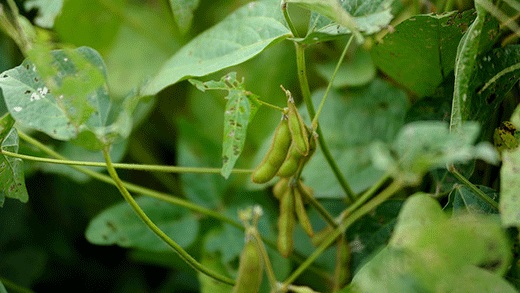 A Kansas State University researcher is on the hunt for ways to improve the quality of soybean seeds so that the crop continues to maintain high levels of protein as crop yields increase.
A Kansas State University researcher is on the hunt for ways to improve the quality of soybean seeds so that the crop continues to maintain high levels of protein as crop yields increase.
Ignacio Ciampitti is leading a three-year study that involves six other U.S. universities and one private consultant. Their work is supported by the United Soybean Board, which has invested nearly $1.5 million for more than three years.
In addition to K-State, the project includes researchers at South Dakota State, Iowa State, Arkansas, Illinois, Purdue and Minnesota. Dan Davidson, a private consultant in Nebraska, is also part of the project.
“What we are doing is looking at this idea of how we can improve seed quality,” said Ciampitti, a crop production and systems specialist with K-State Research and Extension. “We know that when soybeans have higher yields, such as 60 to 80 bushels per acre, protein levels in those plants decline. As agronomists, we are always trying to improve yields, but at the same time we want to preserve the quality of that seed because that is what end users are buying.”
Kansas farmers typically harvest just a little more than 200 million bushels of soybeans per year, at an estimated value of $1.6 billion, according to information from the Kansas Soybean Commission. Soybeans have hundreds of uses, including such industrial products as engine oil and biodiesel, but are mostly used for animal feeds and cooking oils.
Ciampitti said the research group found early in the project that protein and amino acids tended to decrease in U.S. soybeans from southern to northern regions, findings that were first reported in the journal, Scientific Reports .
The researchers also think that applying small amounts of applied nitrogen to soybean fields – less than 50 pounds per acre – might improve the composition of amino acids in the plant, “but more research on this is in progress,” Ciampitti said.
They found that diverse rotations with other crops can give soybeans a protein boost, and some agricultural management practices – no-till, early planting dates, lower seed populations and others – help the crop to maintain its protein content at harvest. That work was recently cited in another scientific journal, Frontiers in Plant Science .
Ciampitti noted that the researchers have found mixed results when testing inoculants, such as rhizobia, on soybean seeds. “We believe there may be possibilities for using inoculants, but so far we have only had one study in which we see positive results,” he said.
But, he added, “when we are trying to expand the soybean frontier, there may be possibilities to explore if inoculating seed could help farmers. Based on my past experience, I have seen inoculants improve yields by two to five bushels per acre, but this also depends on the interaction of such factors as soil and weather conditions.”
That work, too, has been peer reviewed and published, recently appearing in Scientific Reports, through the online journal Nature Research.
Additional studies have found that while protein content may decrease in some soybean fields, the level of carbohydrates and other complex sugars may be increasing. That could be beneficial in some livestock systems where farmers are feeding soybean meal to pigs, for example. Carbohydrates provide energy which help animals grow more safely and efficiently.
“We are exploring all the possibilities at this point,” Ciampitti said. “We have evidence for the first time that there has been a change in the composition of soybeans, which will lead to a new (research) effort on improving our understanding of changes in soybean seed quality.”
K-State Student News
Collegian editor-in-chief the 2020 Kansas Collegiate Journalist of the Year
 When Kaylie McLaughlin, Kansas State University junior in digital journalism, Shawnee, walked into the Kansas State Collegian newsroom in October 2017, she had no idea she would fall in love with newspapers, edit the paper for three consecutive semesters and be named the 2020 Kansas Collegiate Journalist of the Year.
When Kaylie McLaughlin, Kansas State University junior in digital journalism, Shawnee, walked into the Kansas State Collegian newsroom in October 2017, she had no idea she would fall in love with newspapers, edit the paper for three consecutive semesters and be named the 2020 Kansas Collegiate Journalist of the Year.
"My portfolio was video heavy so I wanted to write a little to expand things," McLaughlin said. "Then I stayed."
She remembers when the newsroom first hooked her.
"It was like noontime late October 2017," McLaughlin said. "I was workshopping an article with the news editor. It was my first hard, hard news story. Two days later, I was asked to be her assistant news editor in the spring."
McLaughlin said she stayed at the Collegian in part because she could contribute.
"I stuck around because there were always spaces that needed filled," she said. "I became news editor because someone quit. I became editor and I stayed in that position a long time because there was a need."
That need was never greater than the 2019 fall semester, which started without a faculty adviser for the Collegian, no director of the Collegian Media Group and new professional staff members.
"Kaylie has led the Collegian in a time when full-time leadership has been in flux. It wasn't until the third week of September that an interim director/Collegian adviser was hired, said Linda S. Puntney interim Collegian Media Group director. "She didn't miss a beat and the Collegian didn't miss an issue. It is a fact that Kaylie is almost single-handedly responsible for making certain the Collegian fulfilled its mission to inform the campus and serve as the voice of the students."
Although the print edition of the paper came to a halt this semester because of K-State's limited campus operations, Mclaughlin continues to lead her staff to be on the cutting-edge of reporting, publishing online several times a day. Because of her leadership, the Collegian often has been the first to publish about the impact of COVID-19 on K-State and the surrounding community. She continues to lead her staff despite being at home in the Kansas City area and her staff scattered around the United States.
On April 10, the Kansas Collegiate Media recognized Mclaughlin's work and named her the 2020 Journalist of the Year, an award she appreciates but is surprised to receive.
"The field is super competitive and I was up against a lot of editors who I respect," McLaughlin said. "I was shocked. I think it validates all the insanely difficult work we've been doing and almost makes up for the really hard time we've had this year."
Her involvement with the Collegian didn't diminish her interest in broadcast, and faculty members in the A.Q. Miller School of Journalism and Mass Communications are quick to cite the work she has done.
"Along with her excellent work with the Collegian, Kaylie is also part of the 'MHK All Day' crew at Channel 8News, where she serves as a reporter and technical director for our shows," said Tom Hallaq, assistant director of the Miller School. "During this time of social distancing, she has been a factor in keeping that show on the air and assisting in figuring out the technology we are now working with.
"One of the reasons she should be recognized as Journalist of the Year is because of her versatility in using different forms of media," Hallaq said. "Kaylie is an excellent example of what we hope for all our students: to be well-rounded in their use of media to tell stories regardless of where they originate."
